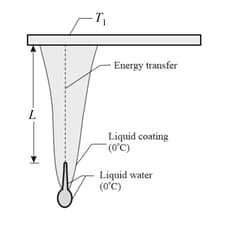Thermal Conduction
Thermal Conduction: Overview
This topic covers concepts such as Heat Flow and Temperature Gradient, Ingen-Hausz Experiment, Thermal Resistance to Heat Flow, and Thermal Conductivity.
Important Questions on Thermal Conduction
Is steel is a good conductor of heat?
Find an analogy between heat current and electric current.
The rods used in Ingen Hausz experiment were made of different material, same _____ and polish to obtain same emissivity.
In Ingen Hausz experiment, _____ of different materials is obtained.
What was the aim of Ingen Hausz experiment?
State the Ingen Hausz experiment with results obtained.
Liquid water coats an active (growing) icicle and extends up a short, narrow tube along the central axis. Because the water-ice interface must have a temperature of , the water in the tube cannot lose energy through the sides of the icicle or down through the tip because there is no temperature change in those directions. It can lose energy and freeze only by sending energy up (through distance ) to the top of the icicle, where the temperature can be below Take and Assume that the central tube and the upward conduction path both have cross-sectional area The thermal conductivity of ice is latent heat of fusion is and the density of liquid water is .

